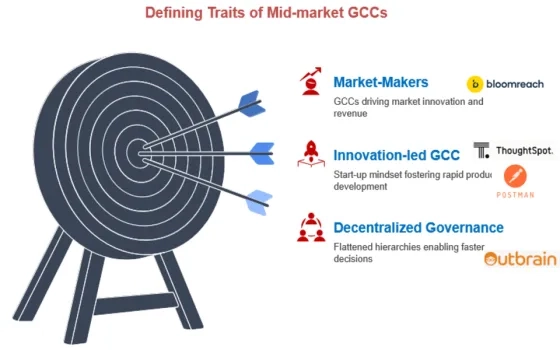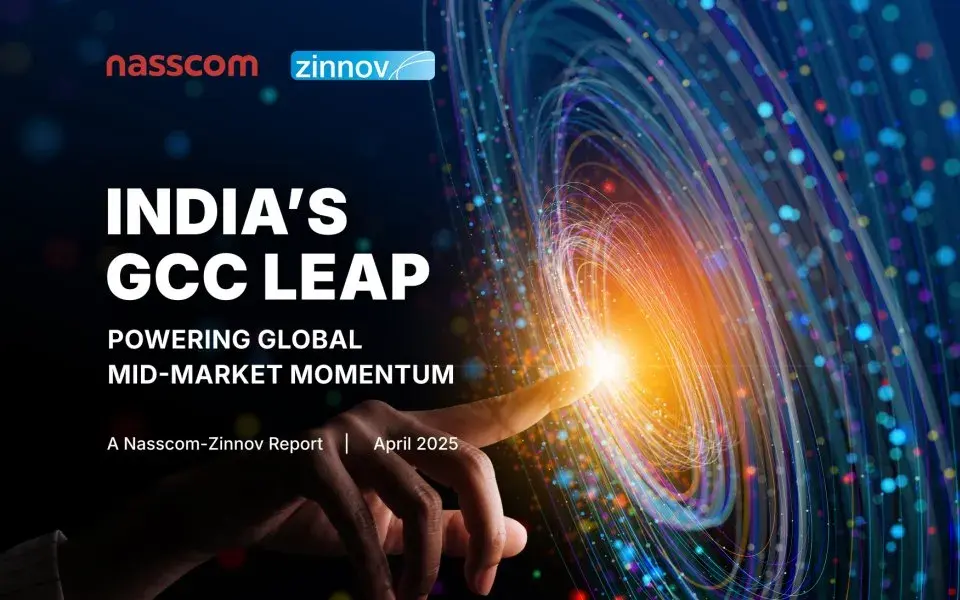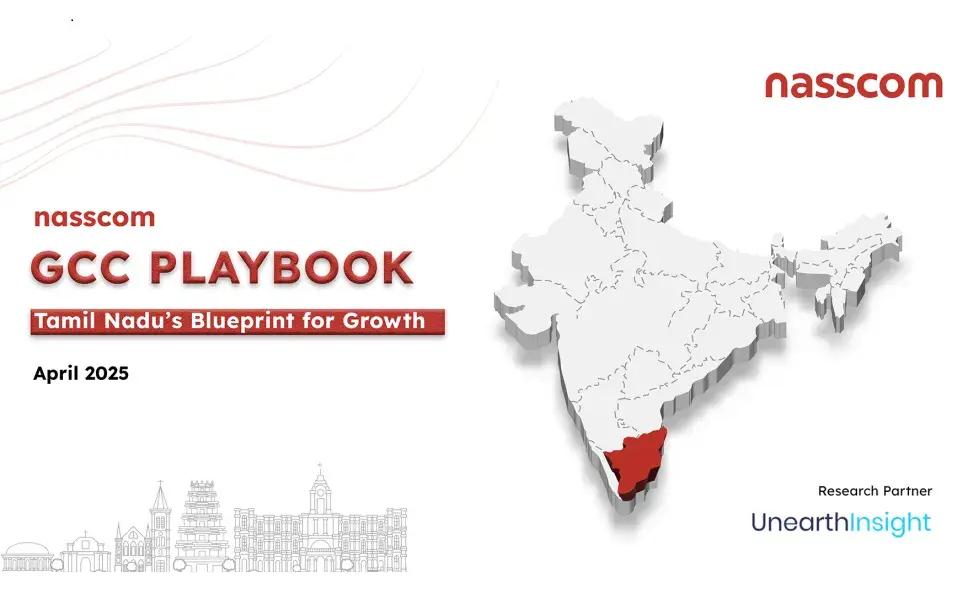This post is the last of a 3 part series on how GIC (Global In-House Centers) can become a source of competitive advantage for their global organizations. This post outlines key success factors, and what GIC leaders in India need to do differently to become world class.
What are the key success factors?
Despite the tremendous potential many GICs have not made as much progress on Value Addition journey as they should have. The key reason why the outcomes have not always lived up to the potential is because many GICs and their managers are trapped in a “comfort zone”. Expectations from onshore stakeholders are sometimes moderate – focused on getting leverage for execution and not thought leadership. The GIC talent is typically hi-quality and are able to deliver on the delivery expectations without much intellectual stretch. And the rewards for the GIC staff are attractive (at least relative to the stretch and risk they are taking!). It ends up being a comfortable, symbiotic relationship that keeps on perpetuating as there is little drive and “hunger” to change the status quo.
However, this comfort zone and the negative cycle it perpetuates is a slow but sure ‘kiss of death’. This “business as usual” cycle slowly dulls the individual capabilities and the organization culture. The outcome is that even when there is an urgent need for the organization to raise its game, the GIC and its managers are not in a position to step up.

It is imperative that GICs make sure that they don’t fall into such a limiting cycle or if they are in one, they break out of it. I believe there are 5 success factors that can help GICs build the culture and capabilities required to accelerate their journey to World Class:
- Shape and align onshore stakeholder expectations. First, engagement is needed with the CEO and business leaders (vs. just the COO/CFO functions in traditional approaches) to ensure that the game changing opportunities that GICs can provide are being considered as part of business strategy discussions. Second, the organization changes required are so significant that it needs global senior management sponsorship. To realize the full potential of the GIC changes are required not just in the GIC but concurrently in the global organization e.g., service strategies, talent models. It often means challenging some of the key design principles and orthodoxies of the global firm. For this to happen, the CEO and senior management need to be involved and understand the GIC more deeply than what they would do typically, and signal their change expectations clearly.In my experience while the senior business leaders might not be close to the GIC, with the right set of facts it is not difficult to get them excited about the business opportunity. The bigger challenge of changing expectations is often with the middle managers, who are less directly responsible for business outcomes. They are often more vested in legacy operating models, have greater need for control, and are thus less change ready. Therefore, it is important to develop a network of business zealots who will become internal promoters and champion the value addition journey of the GIC. It might also mean that you focus on pilots where you demonstrate the much higher level of value add instead of trying to raise the game across the board.
- Develop governance model that balances global integration and local autonomy. Both the commonly seen governance models i.e., “shared services” and“vertically integrated,” are inadequate. A shared services model is efficient but does not generate stakeholder ownership, while vertically integrated models ensure stakeholder ownership and knowledge transfer but tend to encourage the status quo. To drive innovation and higher levels of value addition, you need both global, functional integration and strong local leadership that can identify and drive opportunities. There is often tension between these two axes of the matrix. Senior management needs to be aware of this tension and help find the right balance.
In addition, GIC leaders should be senior enough so they have a “seat at the table” and are empowered to drive significant initiatives and decisions. Often this might require going beyond traditional organization structures and hierarchy. - Build management practices for deepening business knowledge and innovation. Value addition and the journey to World Class is not an accident, you need to consciously invest in the right management practices. A key requirement of the value addition journey to world class is to build deep business knowledge and intimate understanding of customers and their pain points. Traditional training and development structures that GICs are typically good at might be less helpful here as they are for strengthening technical and process knowledge. Investing in travel and global rotations might have higher impact. Many GICs bring in expat managers for functional expertise. However, it is even more important to bring in senior professionals from the business side of the organisation. Such moves might be difficult to pull off but if done well can help connect GIC deeply into the business. Many GICs have strong programs for process improvement. However, they need to build stronger processes for nurturing innovation. Enterprises should consider having an explicit budget to fund innovations in their GICs. It can have a big pay-off relative to the size of the investment.
- Embedding a risk-taking and entrepreneurial culture and nurturing managers to step-up as global, thought leaders. To institutionalize the ongoing journey to world class it is important to build a culture of excellence that encourages risk-taking and entrepreneurial behaviours. Organization’s culture has a recursive relationship with its leaders. It influences the behaviour of the leaders but is equally shaped by them. In GICs we typically have hi-quality, effective managers. However, there is need from them to raise their game and step up as leaders. I will talk more in the next section the shift managers need to make. From an organization perspective it has three important implications: 1) Redesign current leadership development frameworks and approaches to focus on entrepreneurial behaviours and thought leadership. 2) Might need to supplement current management teams by getting hi-quality talent from outside. 3) Embed the new leadership expectations into the performance management systems. In many cases, GICs focus on tenure and performance in current job for promoting their managers. They might need to change emphasis to assessing potential (and not just performance) and have stronger focus on hi-potential talent cutting across tenure and levels.
- Learn and collaborate with the local ecosystem. We are fortunate to be in one of the most well-developed and active industry ecosystems in the world. We have GICS, Indian IT/BPO companies and Product Start-up co-existing. There are opportunities for GICs to learn and collaborate across all 3 types of players.
Sharing best practices and success stories can help GICs learn from each other and get both ideas and motivation to move to the next level. Joint problem solving on common topics through GIC forums can yield insights that companies might struggle to reach individually. This industry discourse and collaboration can help raise the bar for the entire industry.
“Make vs. Buy” has been a perennial debate. Many organizations have now moved beyond this debate and recognized that there is a role for both and these models can co-exist. Therefore, hybrid sourcing is now increasingly becoming the norm with GICs often playing a key role in managing the partner relationships. This provides a great opportunity for the GIC to work closely with IT/BPO vendors and learn from them where it makes sense.
One of the most interesting collaboration opportunities today for GICs is leveraging the product start-up ecosystem in India. There is tremendous change happening in the technology space and it is not possible for anyone organization to be at the cutting edge of all of it. Especially for the more traditional organization making the transition to a digital enterprise can be highly challenging. In response, many GICs have set up incubators (e.g., Target, Pitney Bowes) to work closely with tech start-ups. This and other modes of collaboration with start-ups can be a very interesting option for GICs.
What do leaders need to do differently? Marshall Goldsmith’s famous call,“what got here won’t get you there” rings so true for us. To deliver on the execution oriented expectations required a certain type of mind-sets and capabilities. To deliver on thought leadership and innovation required to be world class calls for different mind-sets and capabilities. Therefore GIC leaders need to make 4 important shifts:
- From Operations Managers to Thought Leaders & Innovators. Our managers are very good at execution and getting things done, whether project delivery or managing service quality. To be a thought leader and innovator they will need to build strategy and critical problem solving skills. They will need to change their mind-set from focusing on the Urgent and the near-term to learning to deal with the Important but Not-Urgent, because that is the nature of lot of thought leadership and innovation. They will also need to need to manage more complex conversations. Managing execution involves relatively structured and predictable conversations. Thought leadership will be more complex conversations and more possibility for conflict with onshore stakeholders who might not be used to that mode of engagement back from the Offshore managers.
- From Functional Experts to Business Experts. We have strong technical and process skills; however, the key success factor in the next stage of the value addition journey is business and customer knowledge. Managers will need to invest in this self-learning or they will get left behind.
- From “Safe pair of hands” to Entrepreneurial Risk Takers. Our current processes and delivery models are often designed to minimize risk and ensure predictable delivery. For this we have tended to look for and encourage “safe pair of hands”. In an era where innovation is paramount, you need entrepreneurial risk takers. This is not a simple change as it is deep rooted in the culture of the organization. Senior most leaders have to personally signal the culture change through their own actions.
- From Local Champions to Global Influencers. From managing teams locally increasingly the expectations will be to lead and influence globally. This requires high levels of multi-cultural sensitivity, sophisticated communication skills and most importantly deep understanding of global organization priorities.
In summary, the change is for our Managers to step up to being Leaders. The most critical aspect in this change will be drive, “hunger” and a relentless pursuit of excellence. If we can build and sustain that passion and energy, rest of the changes will follow.

To conclude, GICs are at a very exciting juncture. There is strong momentum and a real opportunity for them to move to a next level in their journey to World Class, where they become a source of competitive advantage for their global organizations. I hope this note provides GIC leaders with some good ideas and inspiration to realize this wonderful future for their organizations and for themselves. It will not be an exaggeration to say that the future of GICs depends to a large extent on how the GIC leaders step up and drive change. So my message to all the GIC leaders is “Carpe Diem” – seize the day!!
This blog has been slightly modified and published with permission from Nitin Seth. The original blog can be read here- http://bpoinsights.blogspot.in/2015/04/being-world-class-in-india.html





















Comment
excellent article